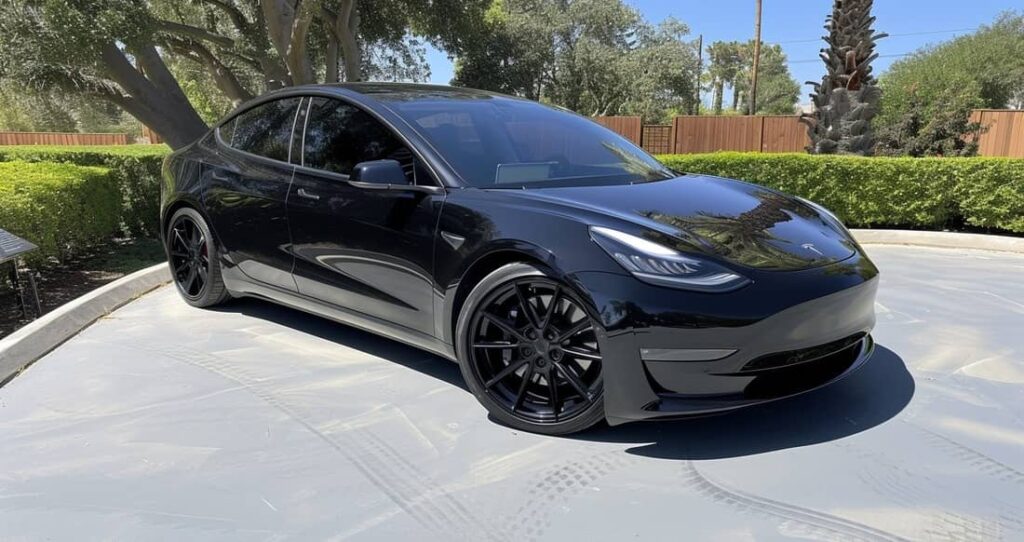One of the conveniences of modern cars like Teslas is the lane departure avoidance feature. This feature helps immensely to keep your vehicle in its particular road lane. However, when the feature encounters any issue, it stops working and throws the error message- “lane departure avoidance features unavailable.”
So, why does this message appear? The primary reasons are misaligned sensors, false triggers, and software glitches. Similarly, dirty sensors/cameras, the weather, and the speed of your vehicle are equally responsible for it.
Nevertheless, the fixes are so simple that most of them can be done by yourself. Furthermore, knowing the reasons in-depth is also key to fixing it and preventing it from happening in the future. Don’t worry, as we will cover it all. So, without any further ado, let’s get started.
Lane Departure Avoidance Features Unavailable Error Message: In-depth Reasoning

The lane departure avoidance feature is an example of how much technology has evolved. This user-friendly feature is only available in modern vehicles such as Tesla, which uses cameras and sensors to monitor the vehicle’s position within the lane.
However, this particular feature, named “Lane Departure Avoidance Features,” is only for Tesla. The same feature with different names is available for other car brands, too.
However, as you can already see, this feature is dependent on other components. As a result, they are prone to fail sometimes, and there are multiple reasons behind it. So, let’s check them out one by one, along with their solution.
Misaligned Sensors
One possible reason why the lane departure avoidance feature may not be working in your Tesla is misaligned sensors. The sensors used in this feature are responsible for detecting the vehicle’s position on the road and the presence of other vehicles or obstacles.
Thus, if the sensors are misaligned, the system may not be able to detect the correct position of the vehicle. This leads to inaccurate or inconsistent performance and may even make this specific feature unavailable in your Tesla.
The Fix
To solve this issue, you should check and adjust the sensors to ensure they are properly aligned. You can do this by following.
- Take your Tesla to a safe location and park it.
- Enter the vehicle’s settings and then navigate to the “Sensor Calibration” option.
- Follow the on-screen instructions to calibrate the sensors, which typically move your vehicle slowly in different directions.
- Once the calibration is complete, test the Lane Departure Avoidance feature to see if it is working correctly.
False Triggers
The lane departure avoidance feature may also not work correctly if it is triggered by false objects or conditions. Well, let us explain. Imagine that there’s chewing gum stuck on the camera or a sensor that is blocking the view or motion.
So, this detail captured by that sensor/camera will send the data to your Tesla and miscalculate things. This may lead to the feature being unavailable.
The Fix
The fix here is to get rid of any object that is blocking the view of the sensor/camera. Here’s how you can do that:
- Find a safe and well-lit area to park your Tesla vehicle.
- Ensure that the vehicle is turned off before attempting to remove any objects from the cameras or sensors.
- Check the manufacturer’s guideline book to find where the cameras and the sensors are located.
- Gently wipe or brush the camera/sensor to remove any objects that may be stuck on it.
- After removing any objects or obstructions, restart the car.
Software Glitches
Tesla is one of those vehicles that is heavily dependent on software. So like any complex software system, the lane departure avoidance feature is vulnerable to bugs and glitches. As a result, a small bug in the system can cause the whole lane departure feature to malfunction.
The Fix
To solve this issue, you should update the software of your Tesla to the latest version. You can do this by;
- Connect your Tesla to the internet using Wi-Fi.
- Enter the vehicle’s settings menu and navigate to the “Software Updates” option.
- Select “Check for Updates” to see if there are any new software versions available.
- If an update is available, download it.
- Once completed, install the software.
- Restart your Tesla.
Here’s a video that should help you with software updates in Tesla:
Dirty Sensors/Cameras
This one is quite similar to the “False Trigger” problem, but the instant of an object, dirt, and debris take place. If there’s dirt or debris in your vehicle’s sensors or cameras, then it will never be able to calculate things properly.
On the other hand, the dirt and debris might even block the view of the cameras and seem blurry. So it’s vital to have a clean camera along with the sensors.
The Fix
You simply need to clean the sensors and cameras. Here’s the guided method:
- Park your Tesla in a safe place.
- Look at the manufacturer’s guideline book to know the location of the sensors and cameras.
- Take a piece of cloth and rub in some specialized camera/sensor cleaning solution with it.
- Simply rub the cameras and sensors while ensuring you don’t go too harsh with it.
Weather Issue
The weather can also manipulate the results of the cameras and sensors attached to your Tesla. For example, if it’s foggy or raining outside, then the camera/sensor won’t be able to detect everything properly due to reduced visibility.
Furthermore, fog can also cause sensors to become wet and dirty, leading to reduced performance and accuracy.
The Fix
In this case, there’s not much you can do as it’s an external factor that you don’t have in hand. However, installing fog lights around your car can certainly help in this scenario. So don’t hesitate to give it a shot.
Speed Of Your Vehicle
At lower speeds, the lane markings on the road may not be visible or may be obscured by weather conditions, road construction, or other factors. As a result, the LDA system may not be able to accurately detect the lanes and provide effective alerts.
This is why Tesla has recommended that we stay between 40 to 90 mph when using this feature.
The Fix
Well, the fix for it can’t be any simpler. Driving your Tesla at 40 to 90 mph would simply do the job. You have to ensure you are within this speed range for the feature to be working properly.
FAQ
Let’s check out some commonly asked questions regarding this topic:
- Does the Tesla Model S Come With the LDAS feature?
Yes, the Tesla Model S comes with the Lane Departure Avoidance System (LDAS) feature. So don’t worry about drifting out of the lane with a Model S with you.
- How Does Tesla’s Lane Departure Avoidance System Compare To Industry Standards?
Tesla’s Lane Departure Avoidance System is considered to be one of the most advanced in the industry. The corrective automatic steering input to keep the vehicle in its lane made it one of the best ones out there.
Conclusion
To conclude, there are six reasons why the lane departure avoidance features are unavailable message appears. Nevertheless, none of the reasons are rocket science and lie within the software or the cameras/sensors themselves. If you have the latest software and cameras/sensors that are free of obstacles and dirt, you are good to go.
On the other hand, don’t forget that you have to be in the speed range of 40 to 90 mph to be able to use this feature. However, one problem that you can’t help much with is a foggy day.

I am an experienced guide in electric mobility, offering clear and expert guidance for those venturing into the world of electric vehicles.
Through collaborations, research, and hands-on experience, I navigate readers through the evolving landscape of smart automobile technologies and the significance of renewables.

